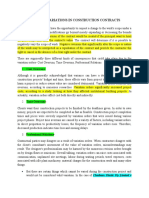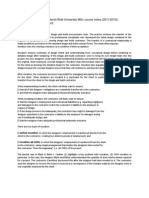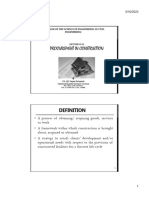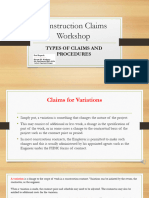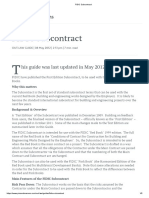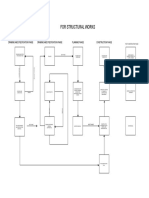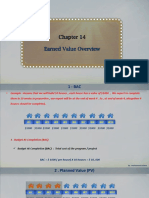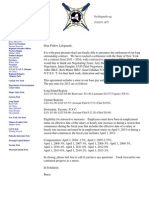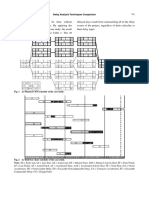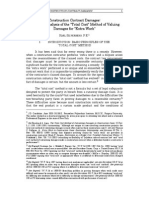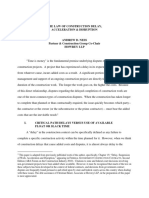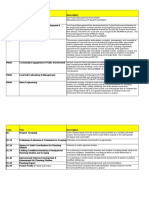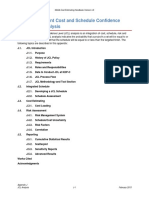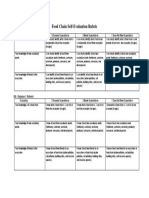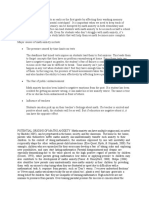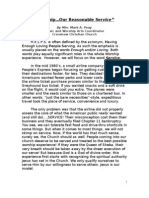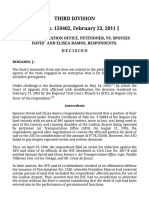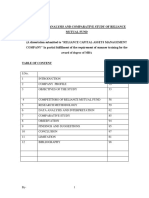0% found this document useful (0 votes)
297 views12 pagesConstruction Variations Impact
This document discusses variations in construction projects and their impact on contractors. It begins by defining variations as any changes to the original scope of work in the contract. While variations can benefit projects, they often result in delays, increased costs, and disputes for contractors. The document then analyzes previous research and presents a case study that found variations significantly impact contractors' cash flow due to long delays in agreeing on payment amounts for variation work. It recommends contractors closely track details of all variation work to minimize negative financial impacts.
Uploaded by
Ajaya KumarCopyright
© © All Rights Reserved
We take content rights seriously. If you suspect this is your content, claim it here.
Available Formats
Download as PDF, TXT or read online on Scribd
0% found this document useful (0 votes)
297 views12 pagesConstruction Variations Impact
This document discusses variations in construction projects and their impact on contractors. It begins by defining variations as any changes to the original scope of work in the contract. While variations can benefit projects, they often result in delays, increased costs, and disputes for contractors. The document then analyzes previous research and presents a case study that found variations significantly impact contractors' cash flow due to long delays in agreeing on payment amounts for variation work. It recommends contractors closely track details of all variation work to minimize negative financial impacts.
Uploaded by
Ajaya KumarCopyright
© © All Rights Reserved
We take content rights seriously. If you suspect this is your content, claim it here.
Available Formats
Download as PDF, TXT or read online on Scribd
/ 12


